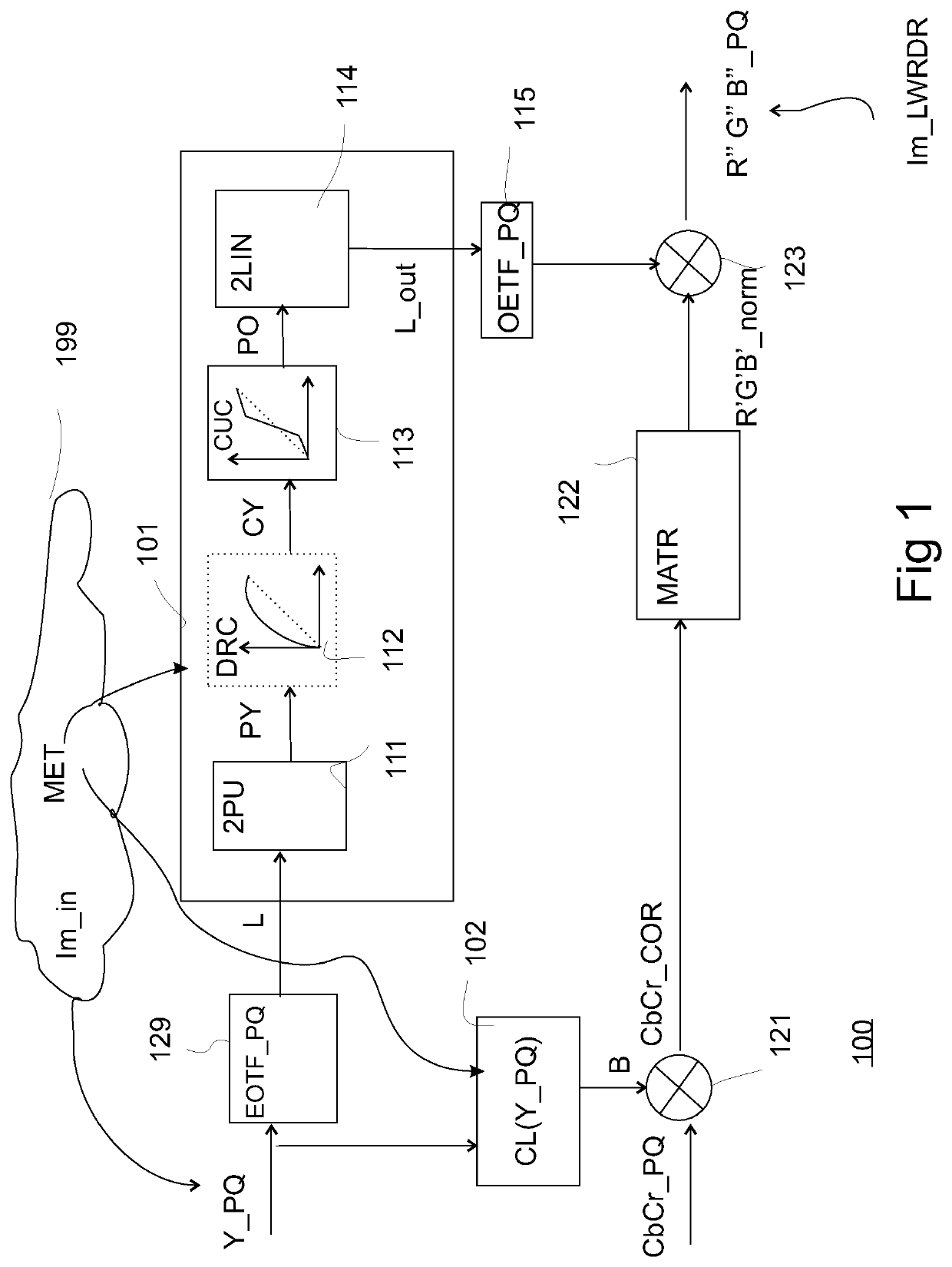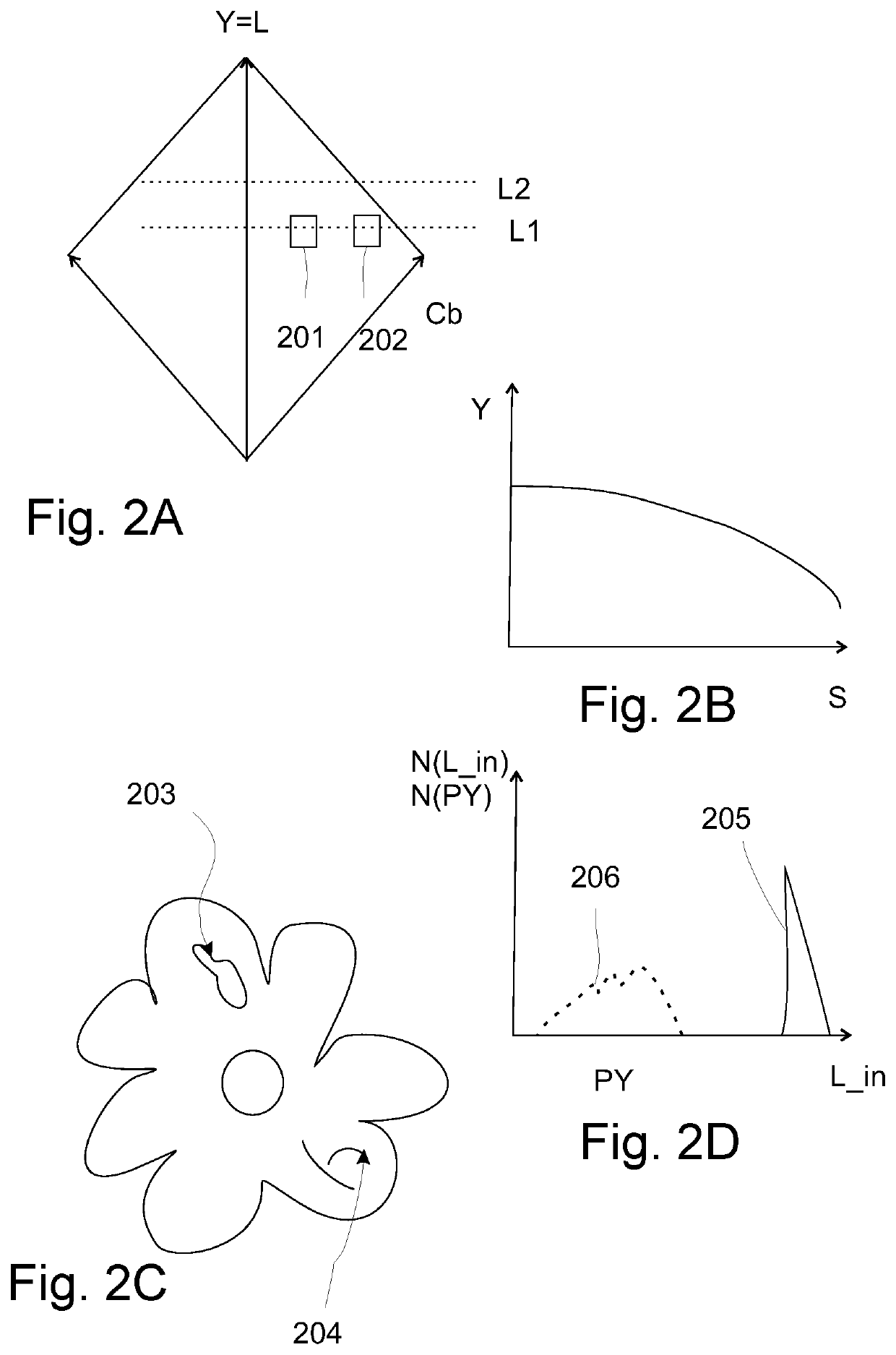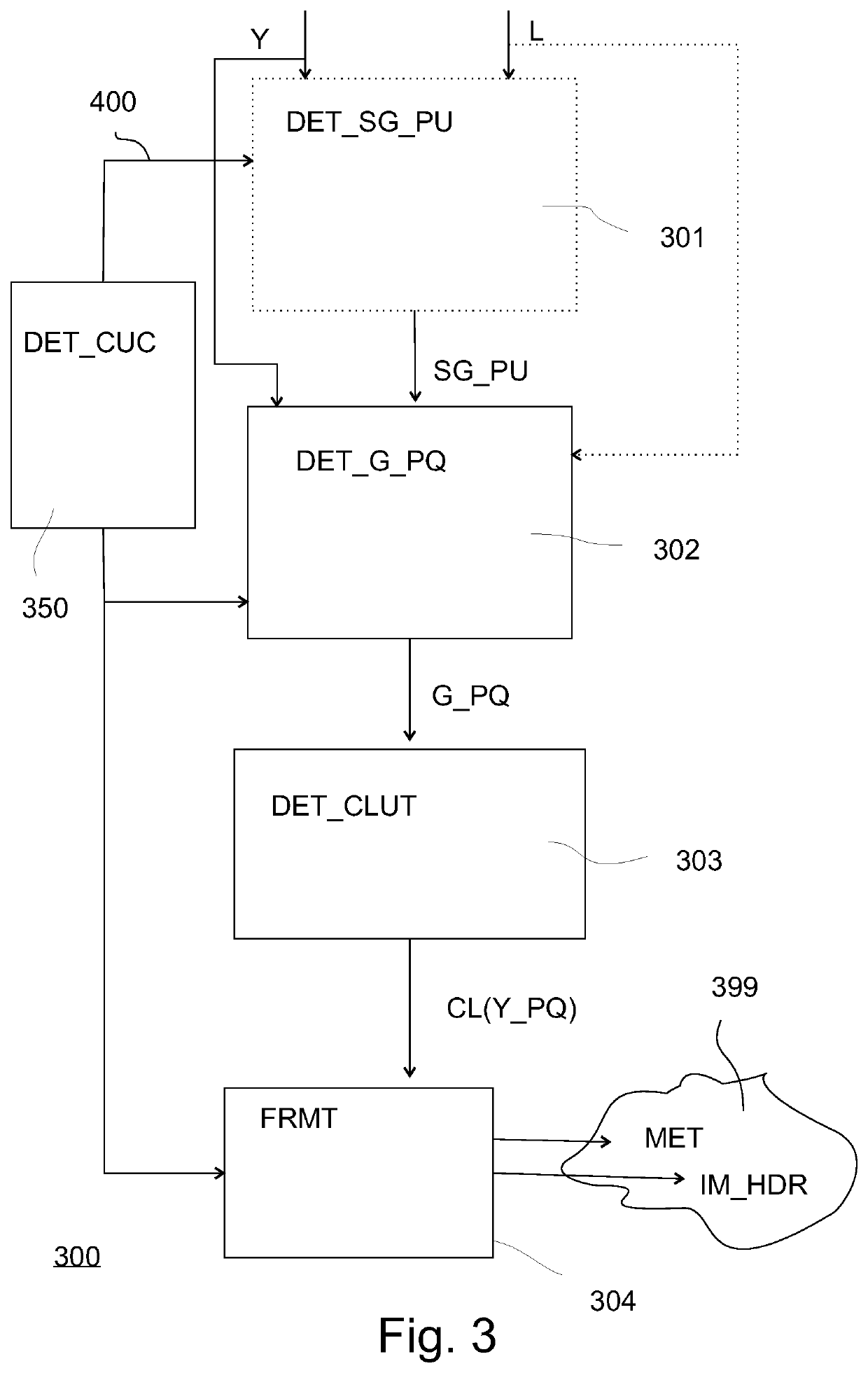Hdr color processing for saturated colors
- Summary
- Abstract
- Description
- Claims
- Application Information
AI Technical Summary
Benefits of technology
Problems solved by technology
Method used
Image
Examples
Embodiment Construction
[0100]FIG. 3 elucidates how the modified encoder, compliant with our SLHDR HDR video encoding approach, works. At the encoding side one has, as input, the original master HDR image (e.g. a 5000 nit PB_C image as graded by a human color grader so that all objects in the various video images like e.g. bright explosions and dark shadowy areas in caves look optimal) available, so one has both the pixel luminances (L) and the corresponding lumas (Y) available. There is a luma mapping function determination circuit 350 comprised (or connected), which can determine the optimal e.g. S-shaped luma mapping curve as shown in and discussed with FIG. 4 (i.e. of circuit 113 in FIG. 1). Note that whereas we elucidate the principles with this S-shaped mapping function, the processing is generic whatever the function (it may even work on situations where it doesn't improve, but also not deteriorate). We needn't elaborate on the many ways in which this can be done by various embodiments developed by ...
PUM
 Login to View More
Login to View More Abstract
Description
Claims
Application Information
 Login to View More
Login to View More - R&D
- Intellectual Property
- Life Sciences
- Materials
- Tech Scout
- Unparalleled Data Quality
- Higher Quality Content
- 60% Fewer Hallucinations
Browse by: Latest US Patents, China's latest patents, Technical Efficacy Thesaurus, Application Domain, Technology Topic, Popular Technical Reports.
© 2025 PatSnap. All rights reserved.Legal|Privacy policy|Modern Slavery Act Transparency Statement|Sitemap|About US| Contact US: help@patsnap.com



